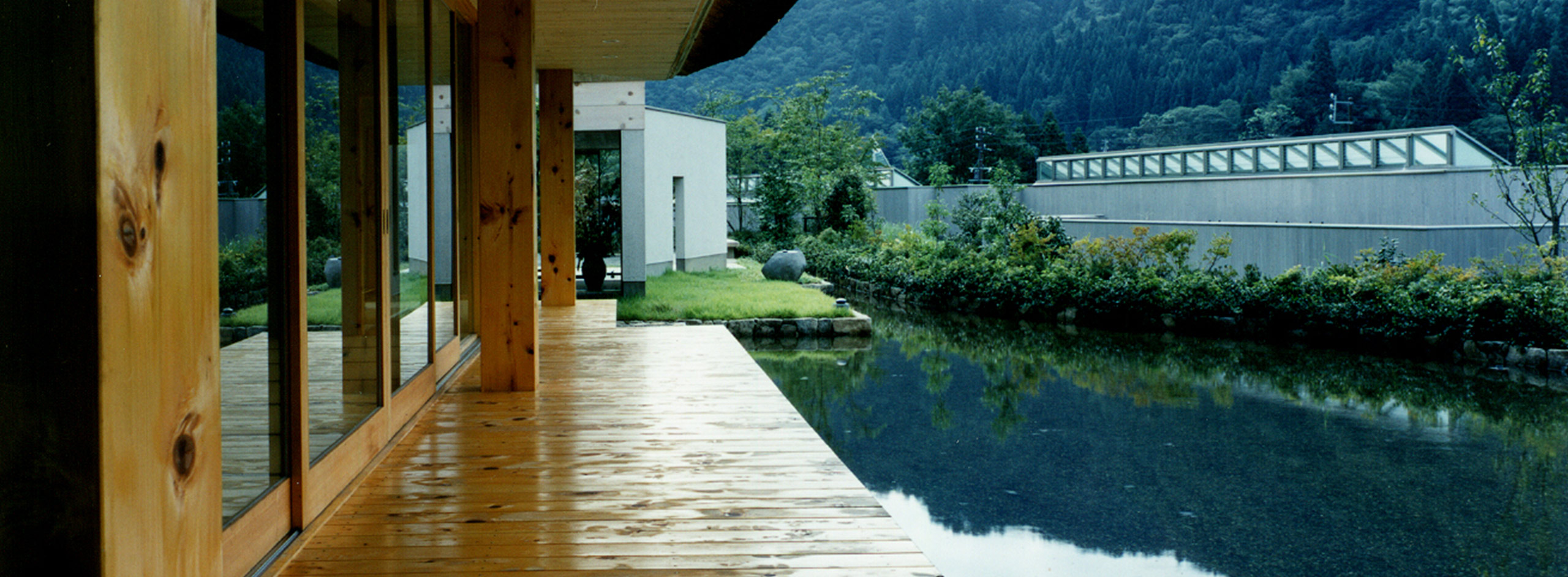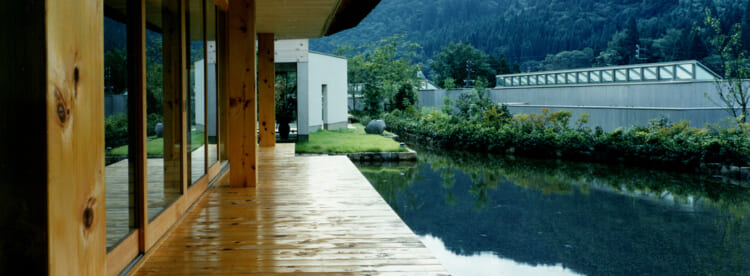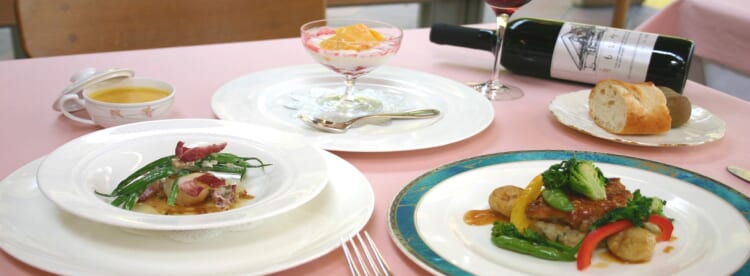Driving Trip to See Historical Sites at Gujo!
Know the history of Kokindenju and
enjoy a French lunch!
We are going on a trip to feel the history and culture under the nature of Gujo. We are going to have a French lunch meal too. Let us go for a driving trip to sense the early summer at Gujo!
 3 min.
3 min.

 30 min.
30 min.
 3 min.
3 min.

 5 min.
5 min.
 10 min.
10 min.
Myoken-jinja Shrine
A shrine with line of cherry blossom trees which is selected as the best 33 Hida Mino Sakura spots
Myoken-jinja Shrine was originally given by Lord To after the war during Kamakura era (1185 – 1333), and was moved from Shimousa-no-Kuni (currently Chiba Prefecture). It was a shrine enshrining Myoken Daibosatsu. Until Edo era (1603 – 1868), it was called Myoken-gu or Myoken-sha. Along the approach to the shrine of 250m long, two cedar trees called Kami-mukae-sugi and Kami-kaeri-sugi of tree age of over 300 years old are standing together with 120 trees of wild cherry blossom and Yoshino cherry. The tunnel of greenery in early summer heals the hearts of all visitors.
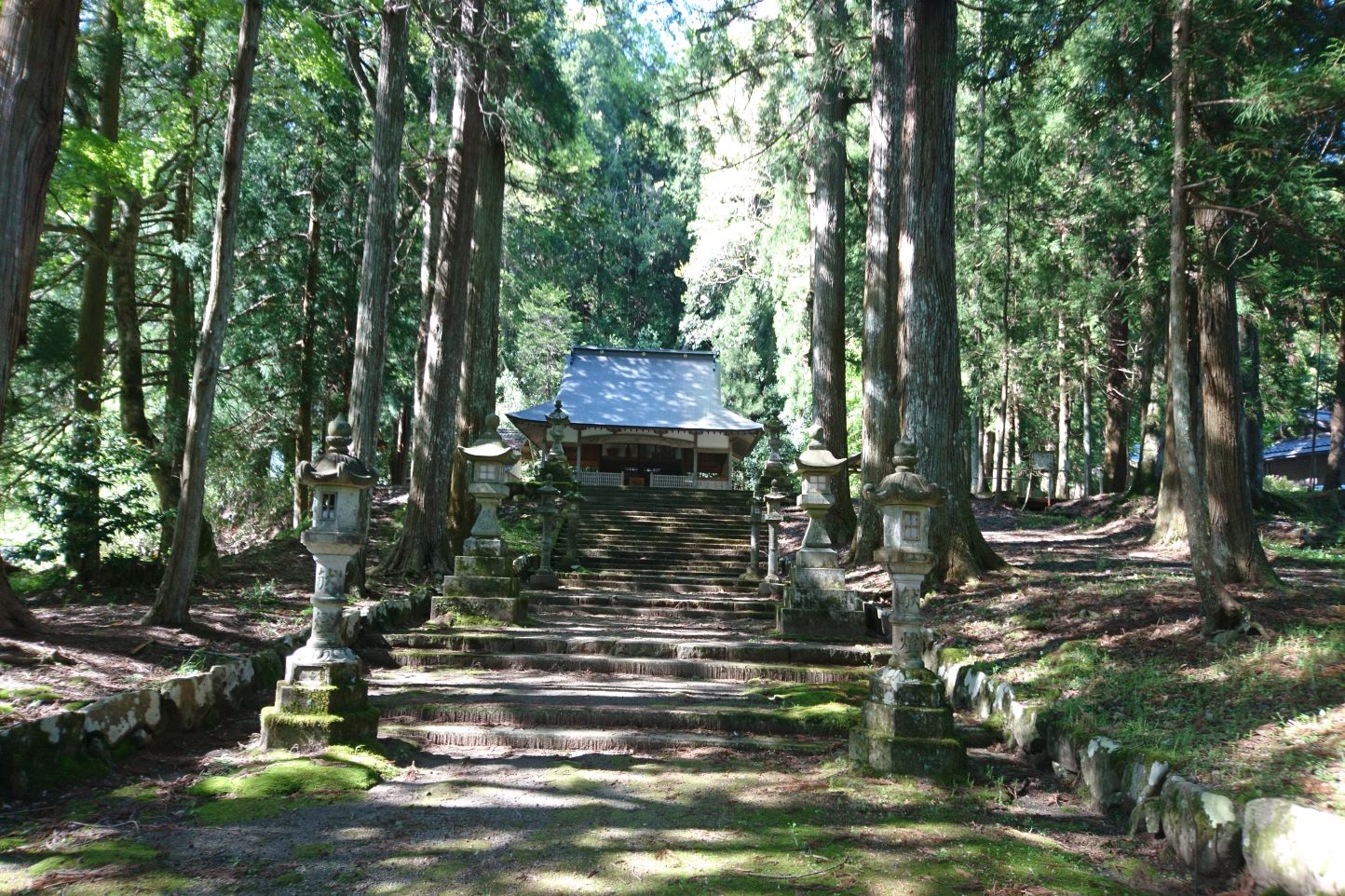
Shadow of trees inside the shrine is so beautiful. You can feel the energy of gods here.
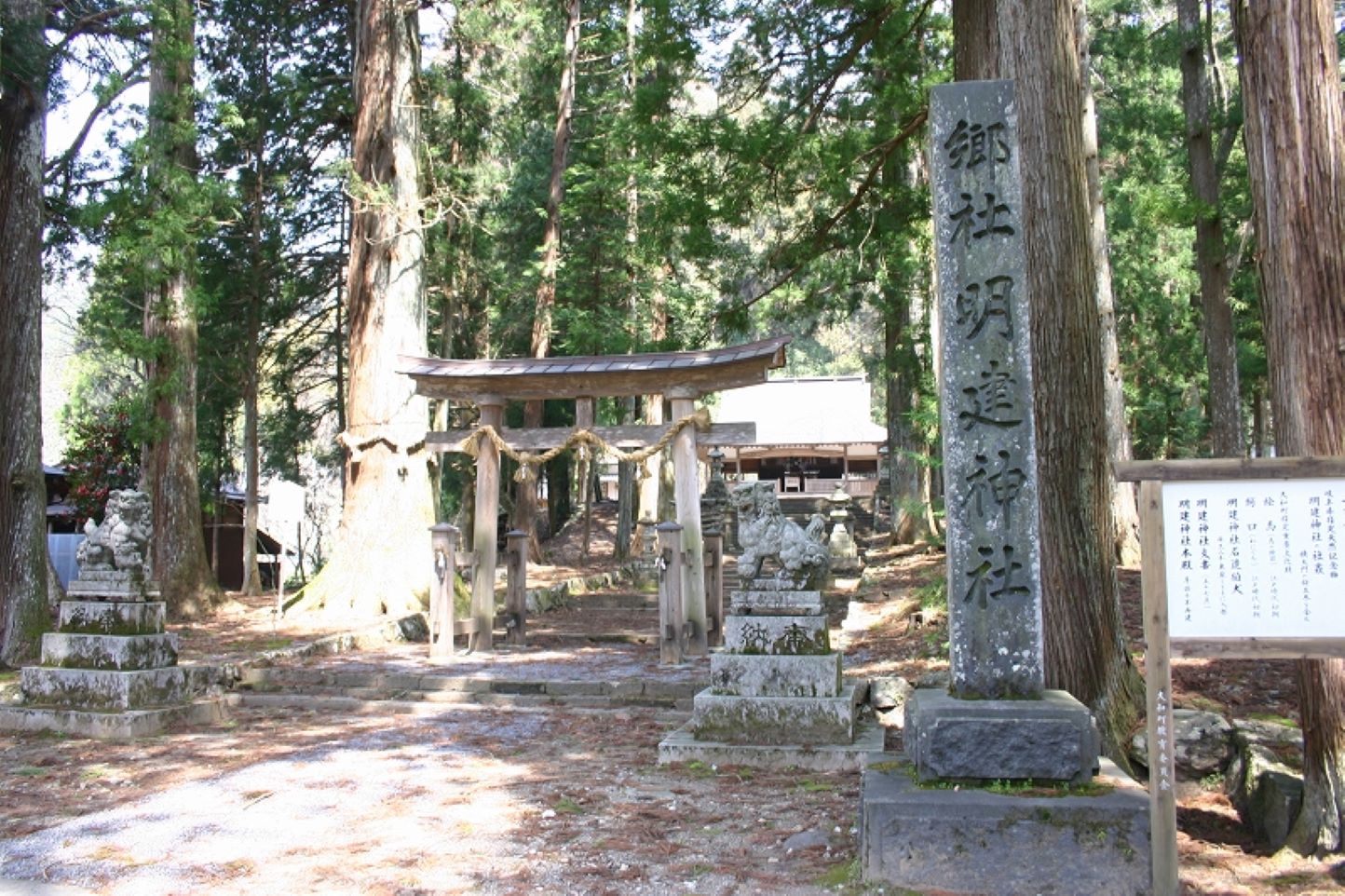
It is located next to Kokindenju-no-sato Field Museum. You can park your car and take a walk.
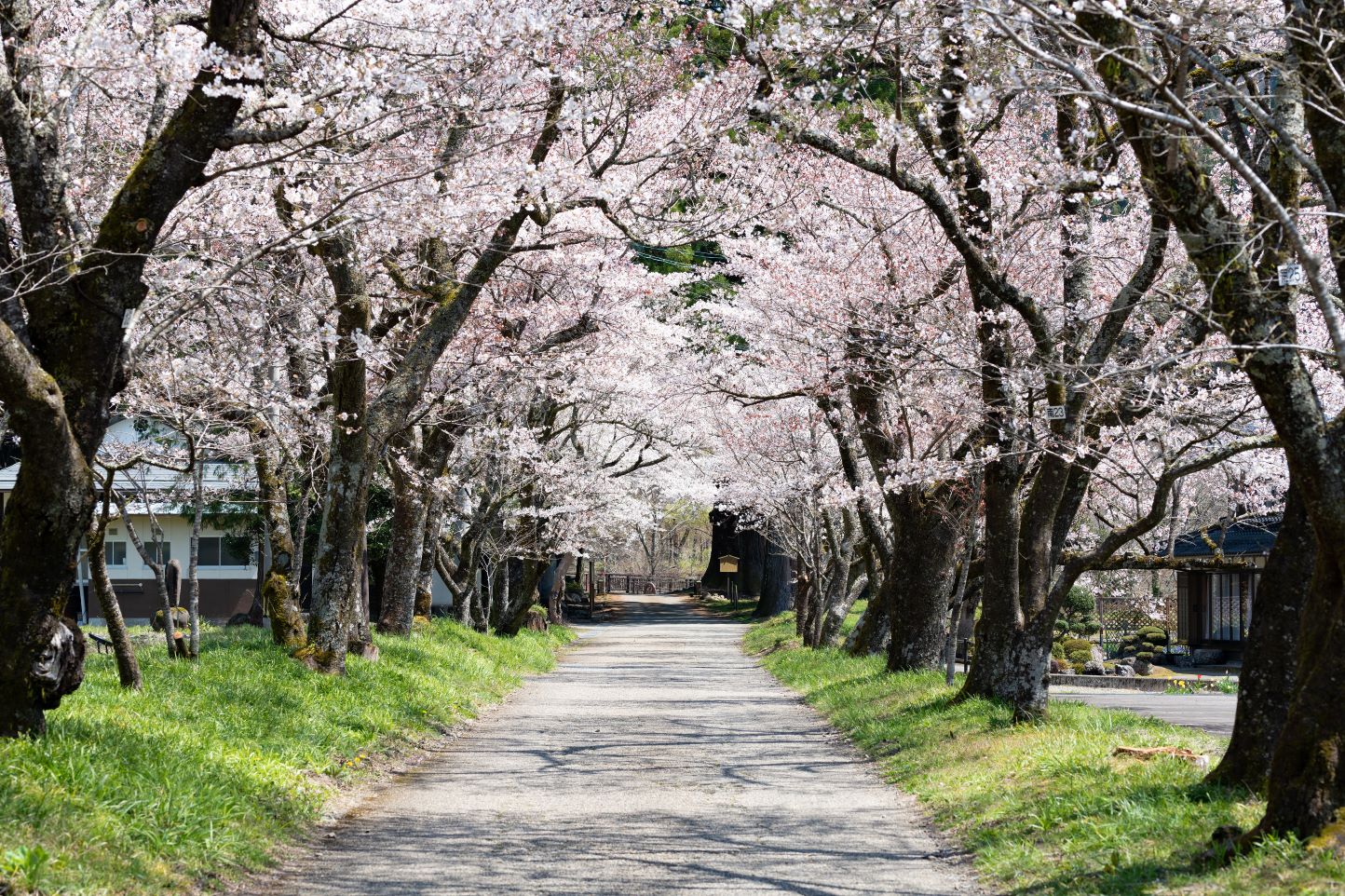
It is one of the best cherry blossom spots at Gujo. A tunnel of pink sakura trees is very beautiful!
Kokindenju-no-sato Field Museum
An outdoor Waka Museum of Lord To and Kokindenju
You can know more about Lord To here at the Kokindenju-no-sato Field Museum. There are exhibitions telling the history of waka (Japanese poems) from the ancient time up till now at Museum of Waka Literature and the history of Lord To and Kokindenju at Toshi Memorial Museum. Other than exhibitions, there are also designated National Scenic Beauties like Toshi-yakataato-teien, Remains of Shinowaki Castle and other historical sites. You can take a walk under the blue sky of early summer in the mountains and along the river.

You can see the fresh greenery inside Seminar House Villa Shinowaki.

Information about Lord To and waka is displayed in the facility.
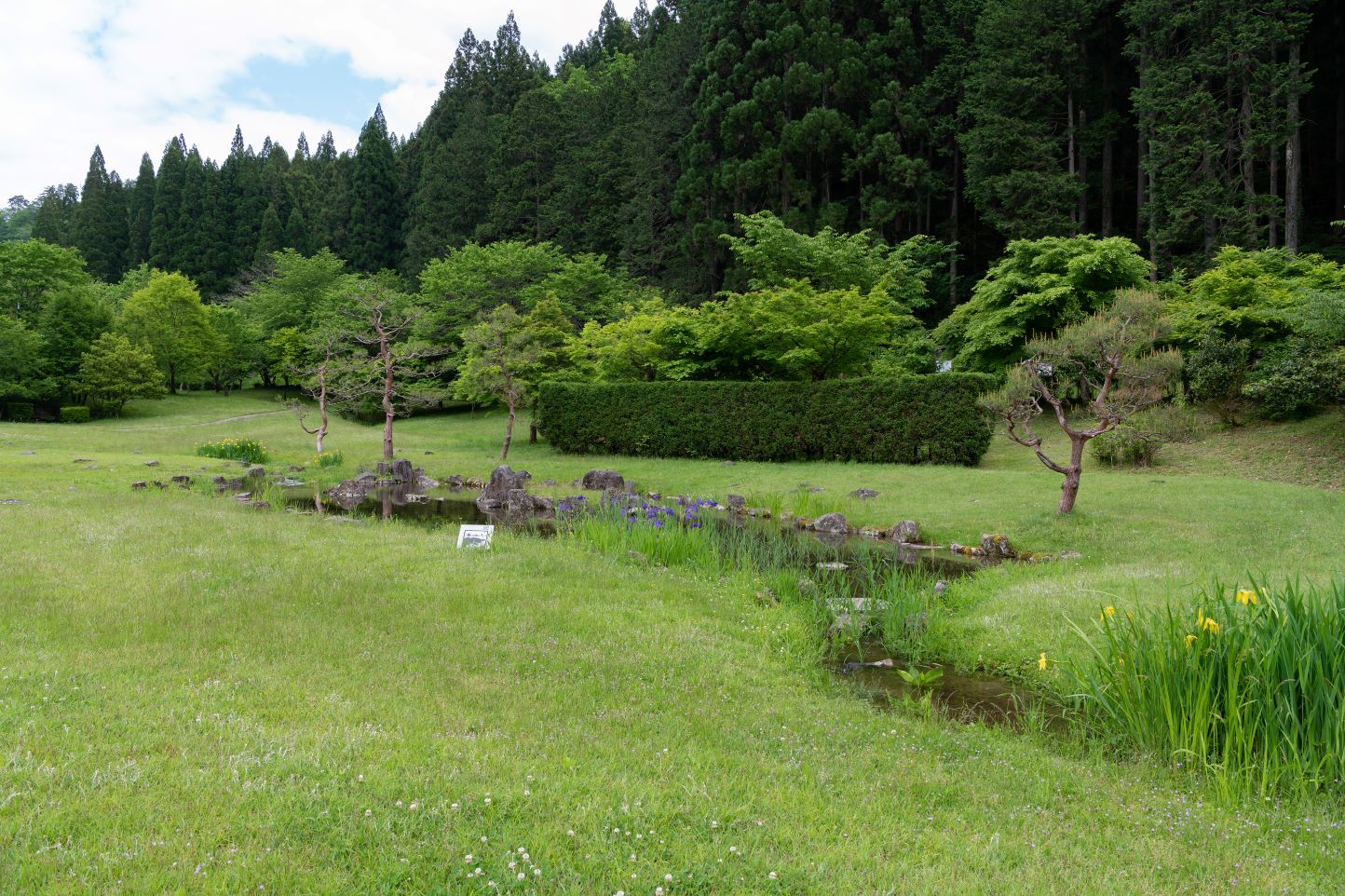
Take a walk inside the beauty of nature.
Restaurant Momochidori
Enjoying the view from a floating restaurant with a French lunch course meal
After we went to Kokindenju-no-sato Field Museum, we decide to have lunch at Restaurant Momochidori.
Chef from Gujo provides French cuisine using local wild game meat and local ingredients. Almost all vegetable used are from local Gujo. Together with the clear water of Gujo Yamato and natural ingredients, this meal heals the bodies of all customers from the inside.
You can also enjoy the view from this glassed-in restaurant. It is the best spot to see the greenery of early summer. What’s a luxurious lunch!
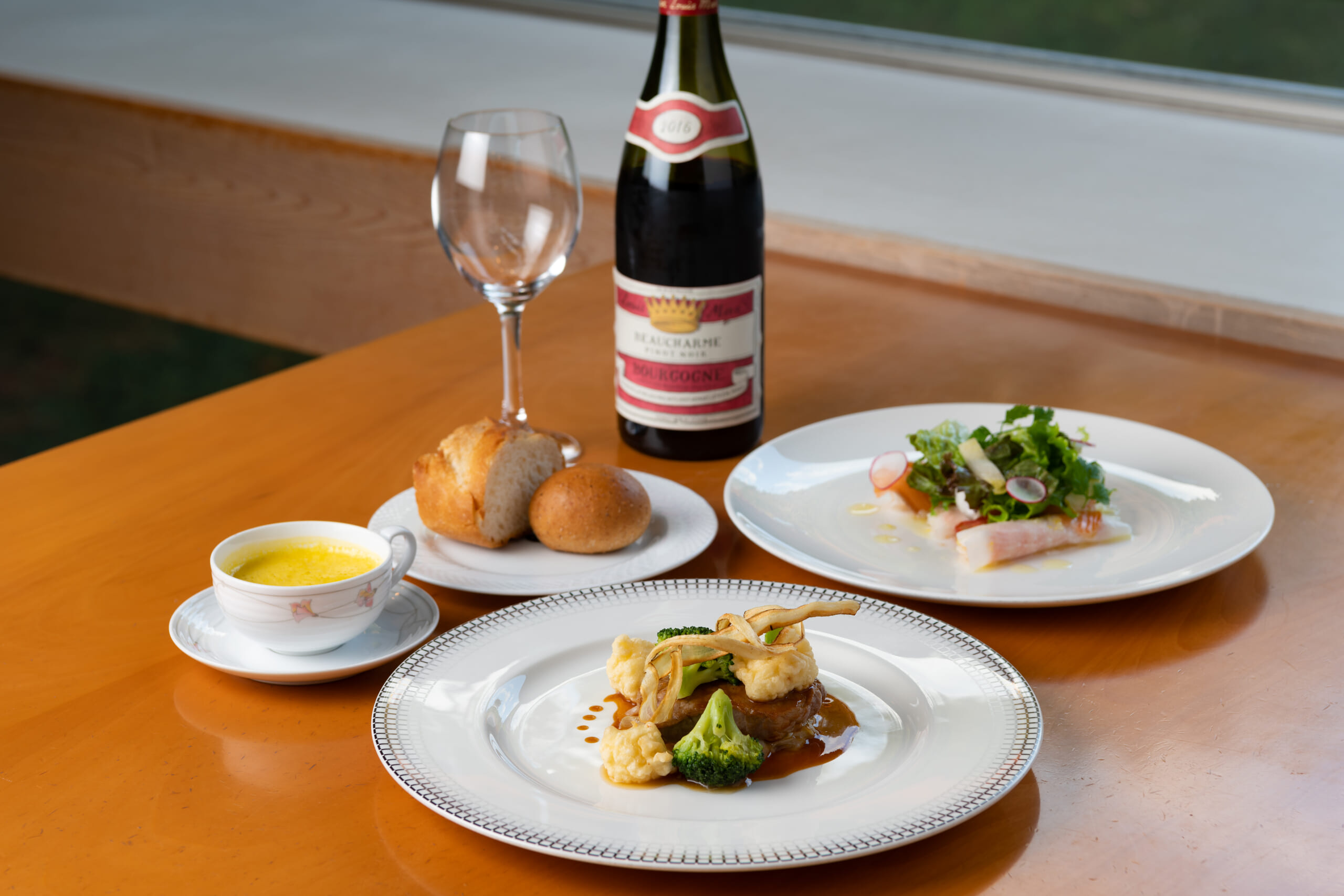
How about a French lunch course meal using local ingredients?
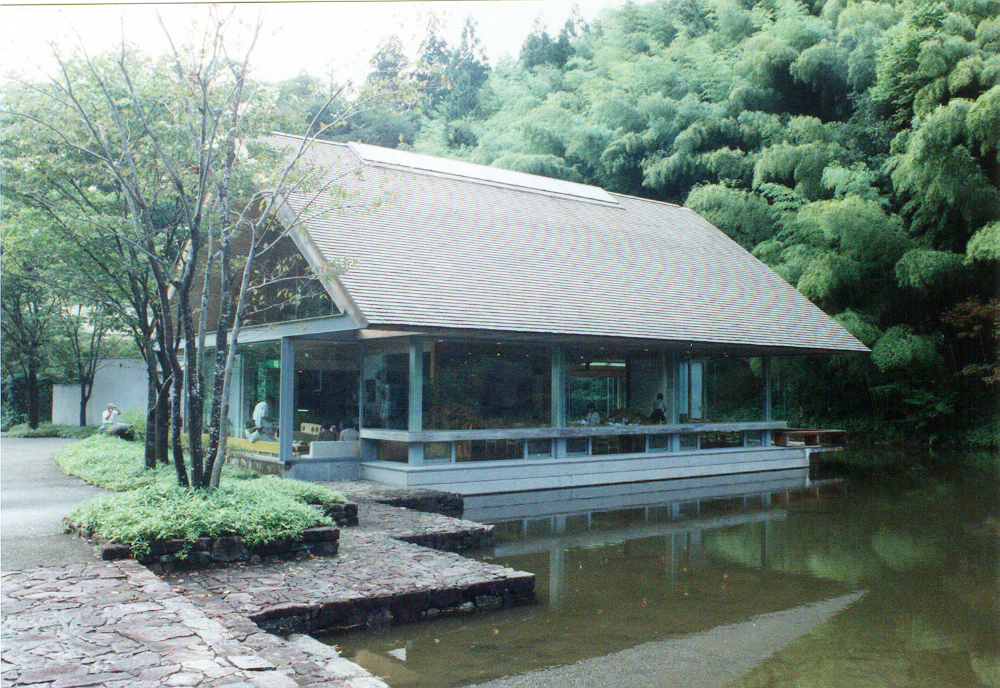
This restaurant is a glassed-in floating restaurant.
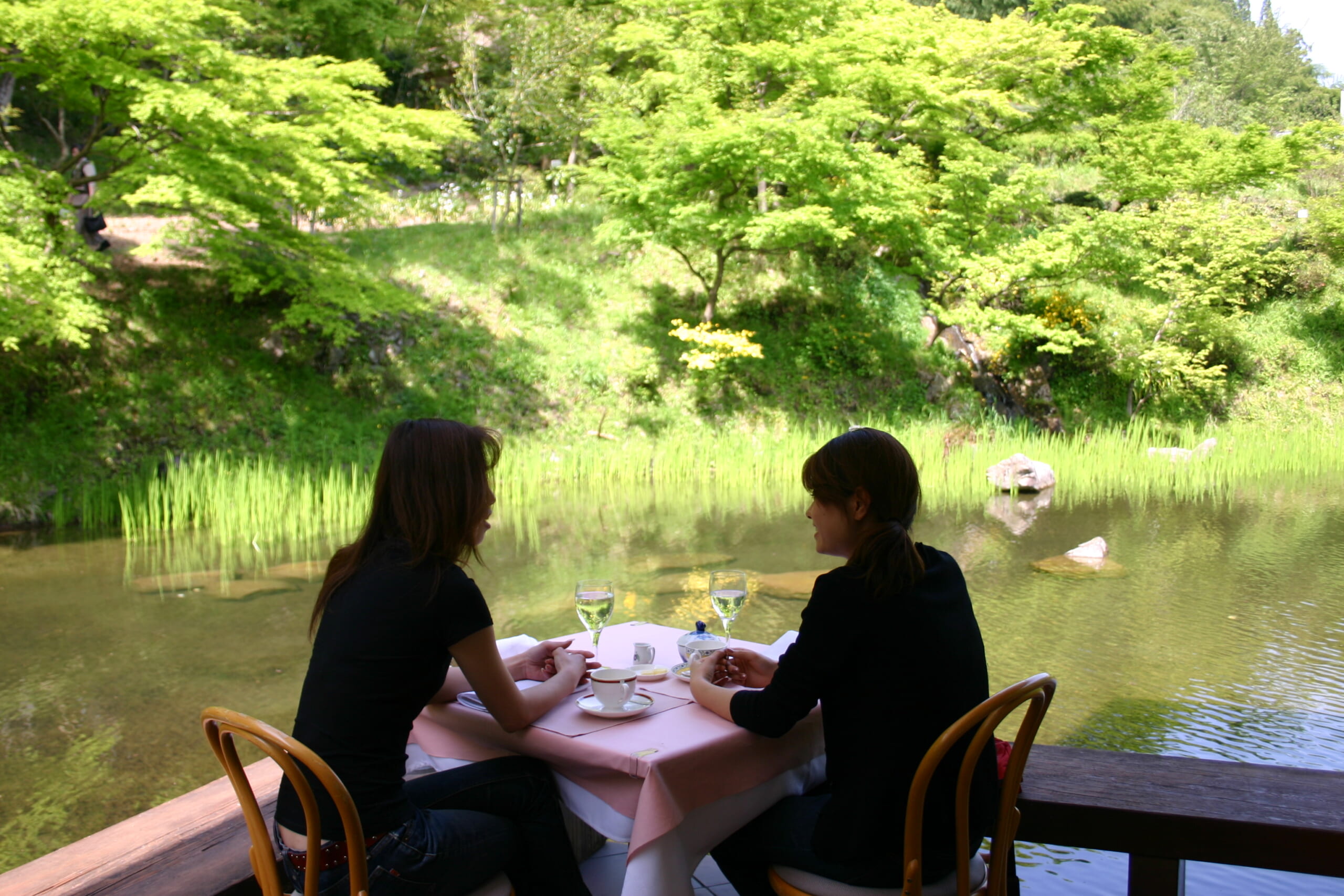
You can enjoy this French meal and spend this luxurious time while seeing the beautiful view.
Nagataki Hakusan-jinja Shrine
A main shrine of Hakusan-shinko on Tokai region
In the ancient time, people living in Tokai region (refers to Shizuoka, Aichi, Gifu and Mie-ken) believed in the God of water (God of agriculture) in Mt Hakusan.
Hakusan Chugu Choryuji Temple was the center of Hakusan-shinko (Hakusan Faith) after established by Monk Taicho during Yoro era (717 – 724). Especially after succeeding numerous temples from Tendaishu (Tiantai). Although the area of the whole shrine was reduced after damage from fire, the inner shrine, the hall of worship and lecture hall are still remaining the same telling us how prosperous in the past. The stone lantern, made during Kamakura era (1185 – 1333), pot in the sanctuary, halberd, Noh-mask and other cultural properties are all designated as Important Cultural Properties.
Tour guide introducing the history of the shrine is available. Please make a reservation in advanced. We highly recommend you if you want to know more about Hakusan-shinko, Hakusan Nagataki-jinja Shrine.
Information and reservation for tour guide

Three gods of Hakusan-shinko were enshrined in the inner shrine. They were burnt during a huge fire in 1899 and rebuilt during Taisho era (1912 – 1926).
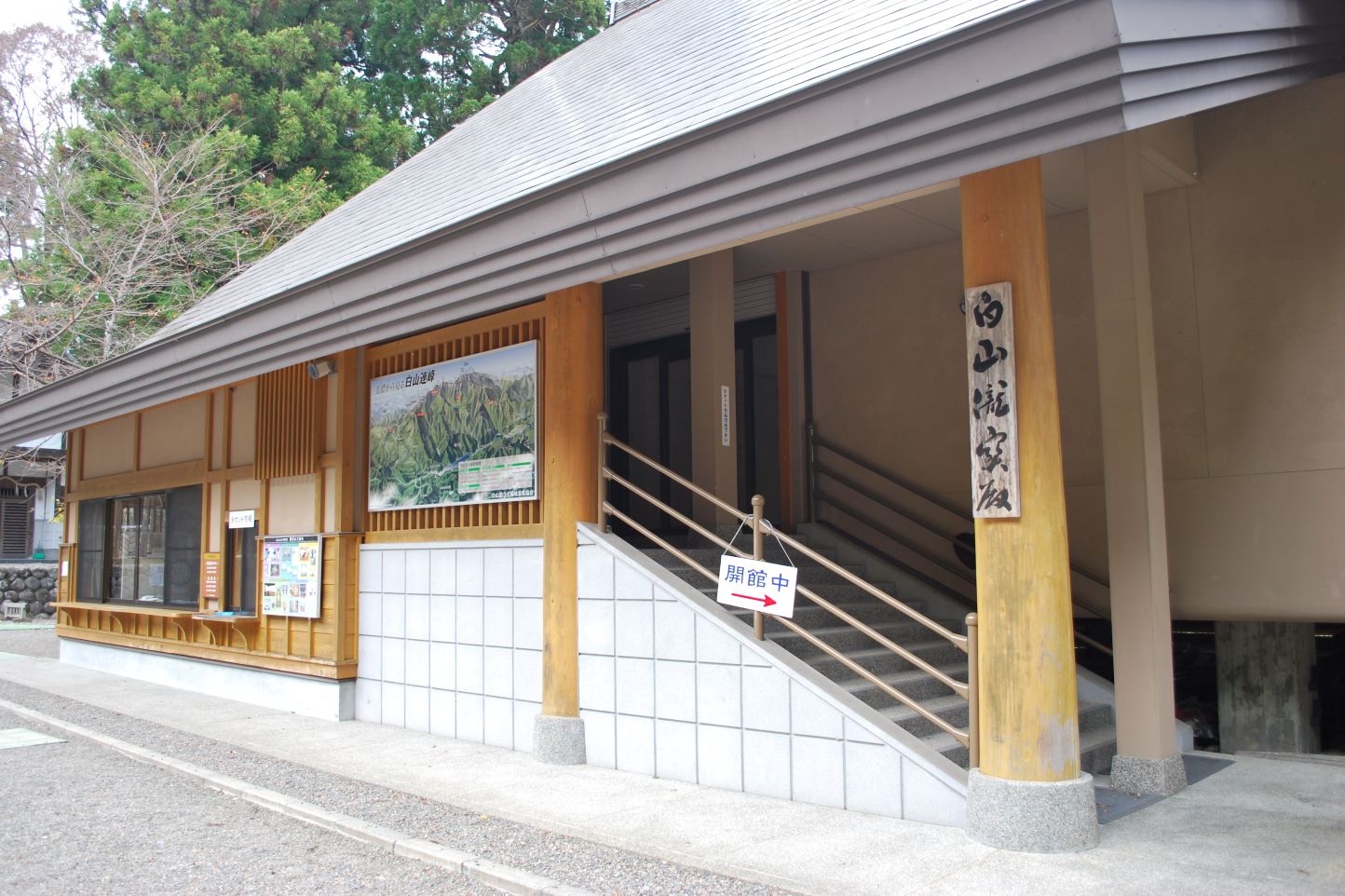
All cultural properties donated by followers from all over the country are displayed inside Hakusan Ryuhoden.
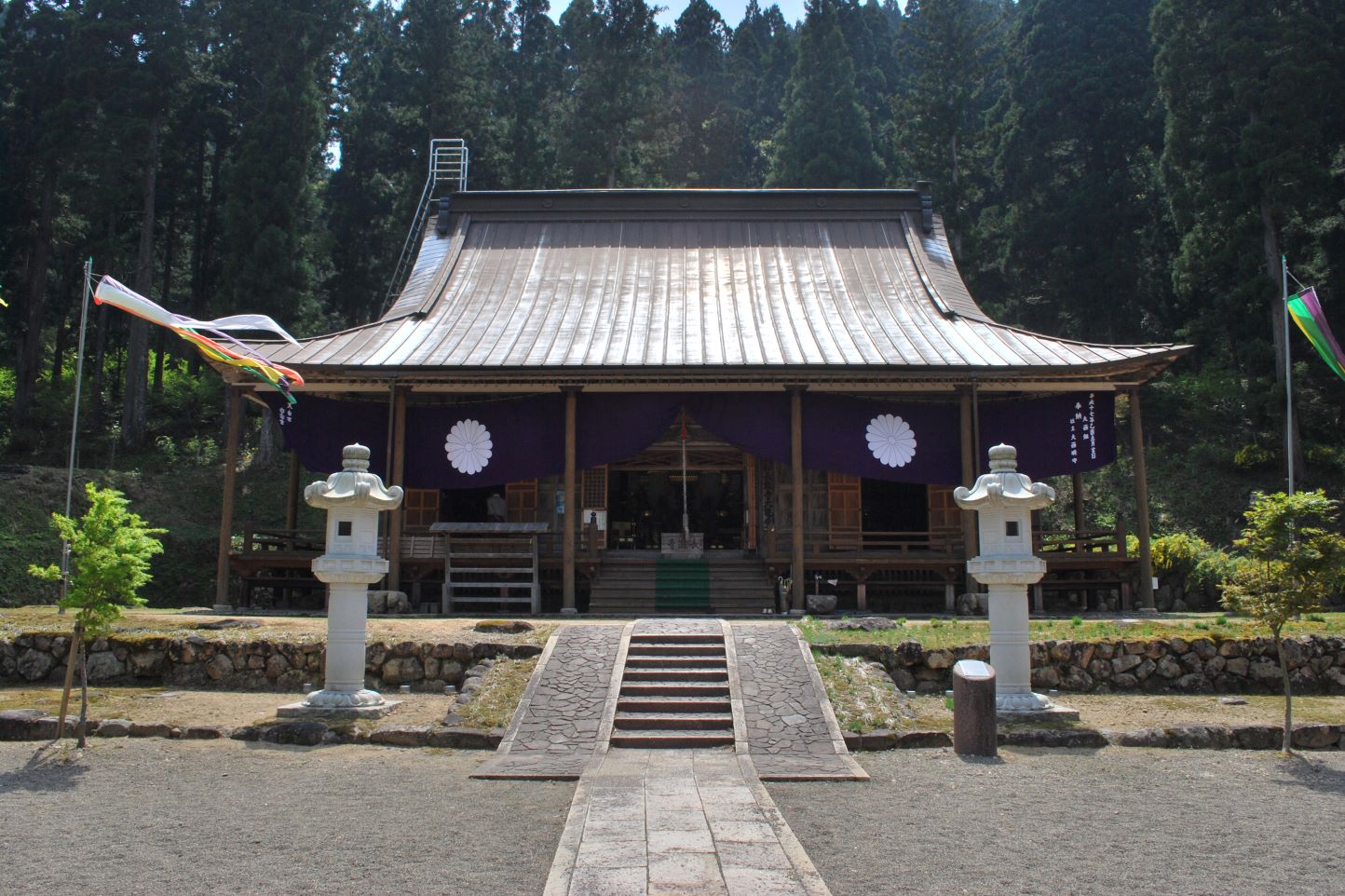
It was a temple with gods and buddha together in the past.
Hakusan Culture Museum
Experience Hakusan Worship on large screen
Hakusan Culture Museum is a museum introducing the history and culture of Mino Banba and Hakusen culture. The appearance of the building is from the shape of Mt Hakusan. Videos and pictures show the history and culture of Hakusan-shinko by introducing the historical sites and facilities. Hakusan-shinko itself is a living witness showing a precious cultural property. Don’t miss the large screen showing the video of Hakusan Worship! It is like climbing the mountain yourself!
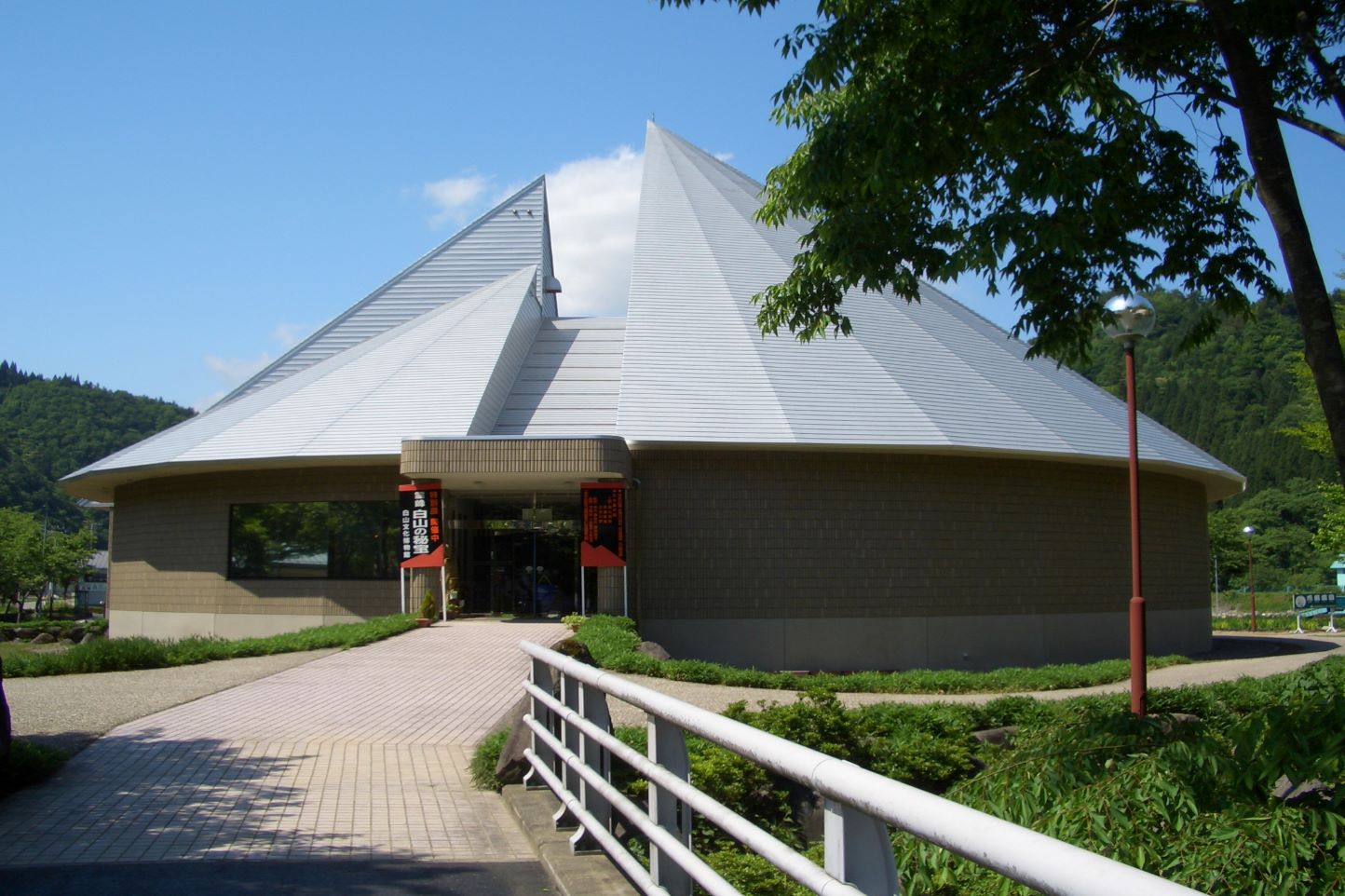
As a symbol of Hakusan Bunka-no-sato, the appearance of the building looks like Mt Hakusan.
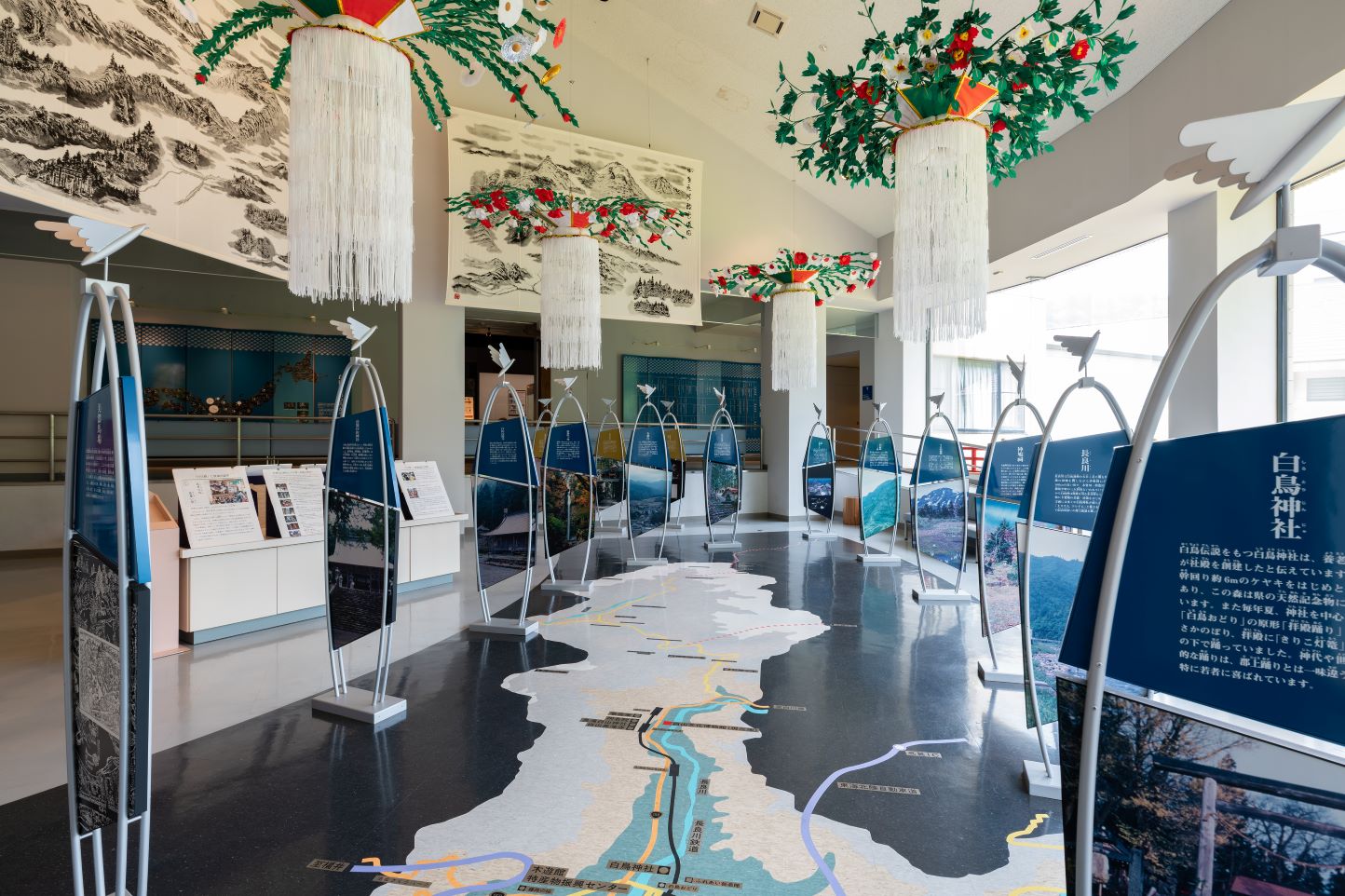
There is exhibition of Hakusan-shinko and its culture inside the museum.
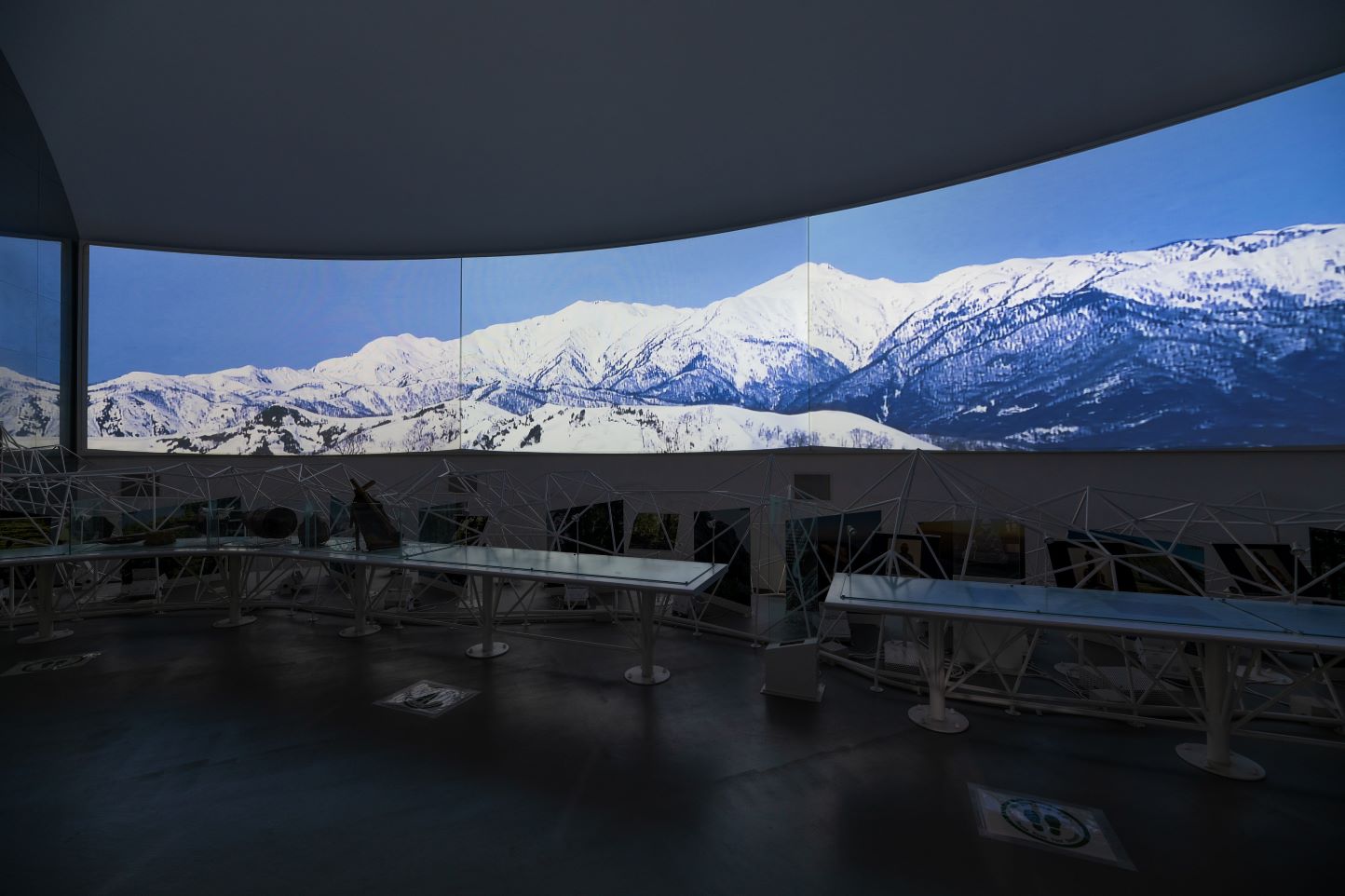
Video introducing Hakusan Worship is fascinating!
Roadside Station Hakusan Bunka-no-sato Nagataki
Feel the clear stream Nagaragawa River and choose your favorite Gujo souvenir!
After visiting Hakusan Culture Museum, you can go shopping at Roadside Station Hakusan Bunka-no-sato Nagataki. Fresh vegetable and local specialty are available at the shop. We recommend local sake Genbun using the clear water from Gujo and natural flower yeast. Flower yeast is a kind of yeast separated from natural flower to make sake yeast. The flavor of this flower yeast is fresh and elegant. You cannot help drinking more after tasting one sip! The clear stream flowing from the back of the facility is going down to the downstream of the river. Seeing the forest on the other side of the stream and hearing the sound of the river is very relaxing.
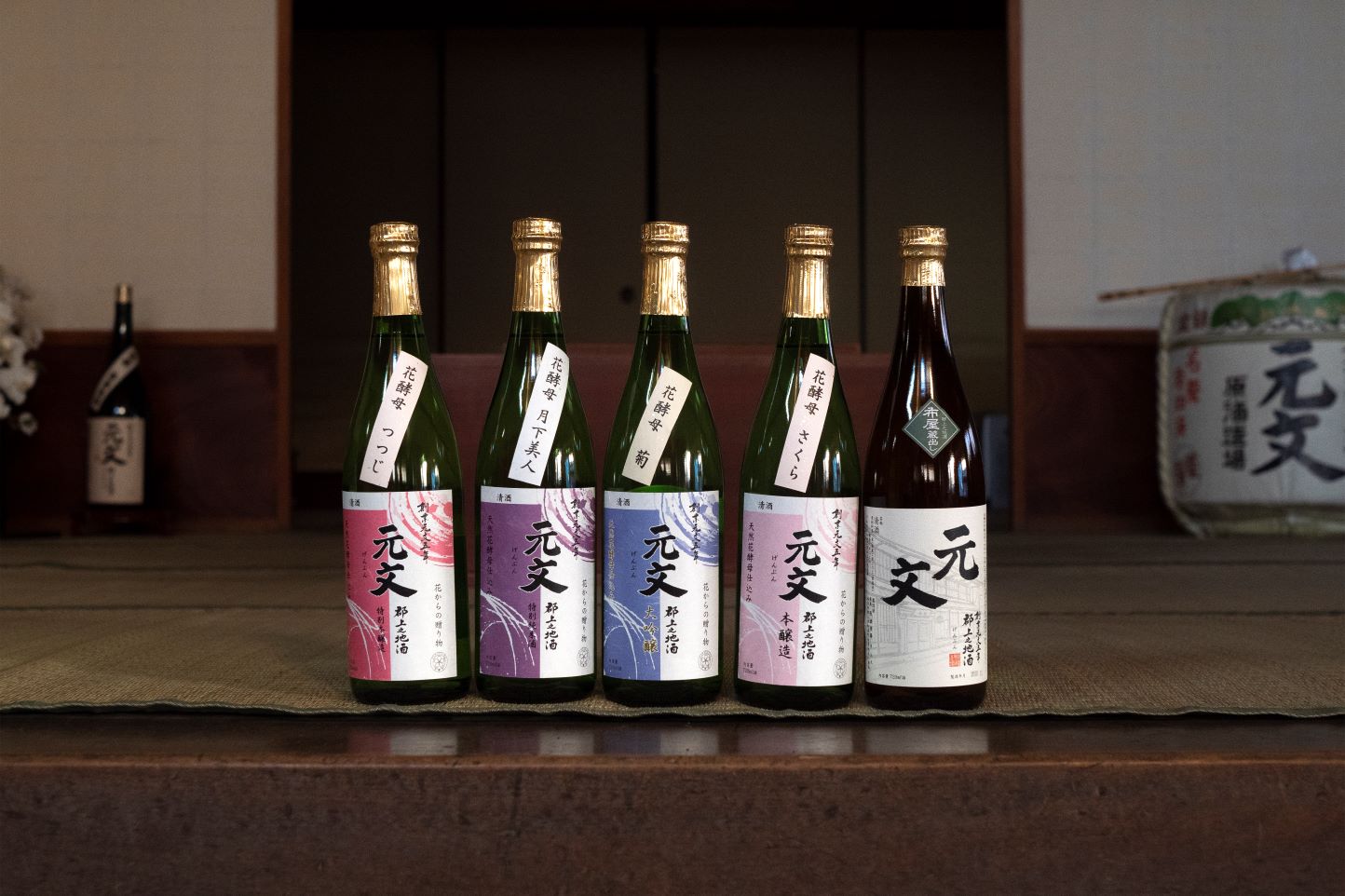
Genbun, using the flower yeast of Tsutsuji, Kiku, Sakura and Gekkabijin, are suitable for gifts.
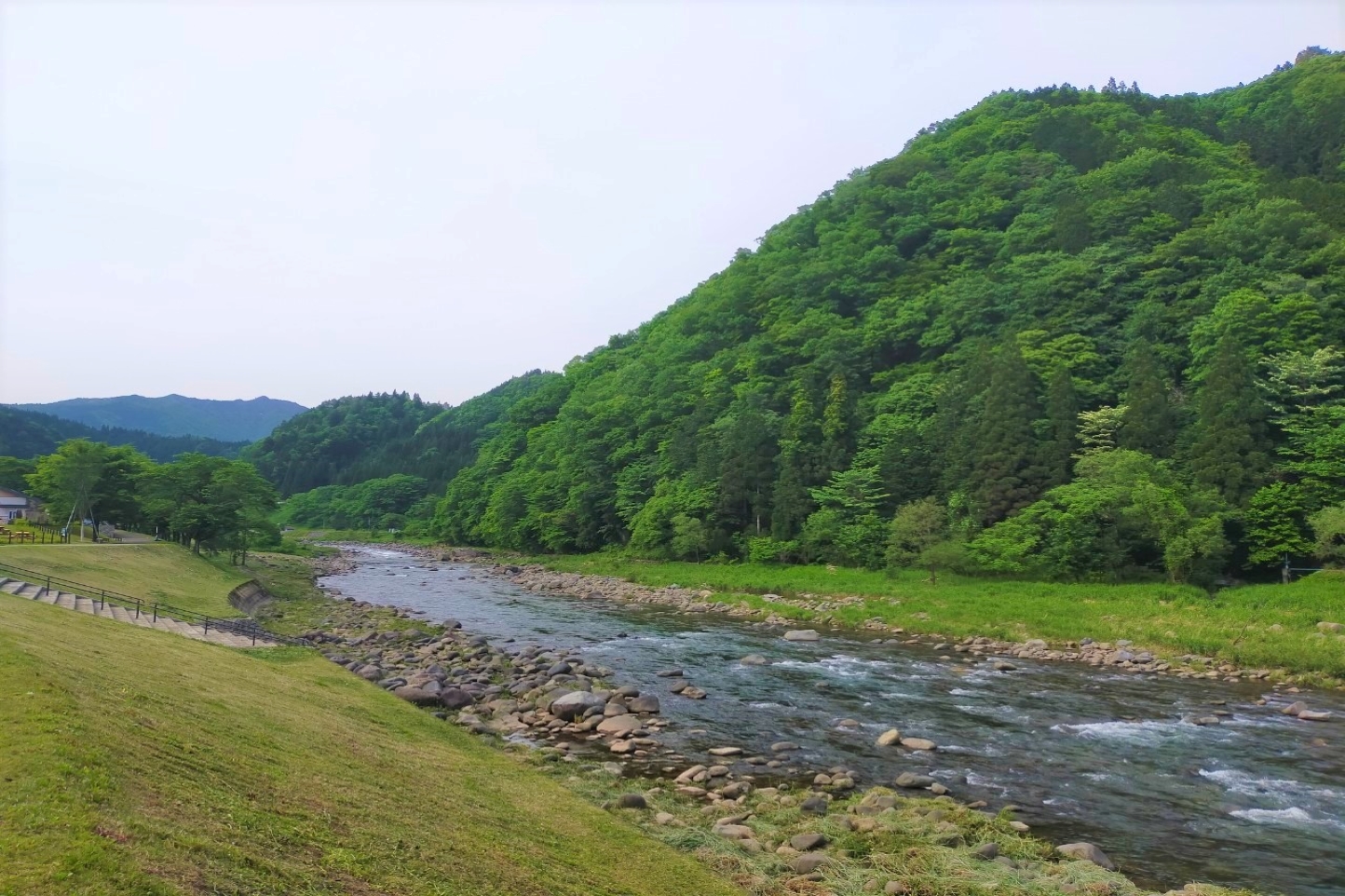
Take a rest and sense the clear stream of Nagaragawa River at the back of the facility.
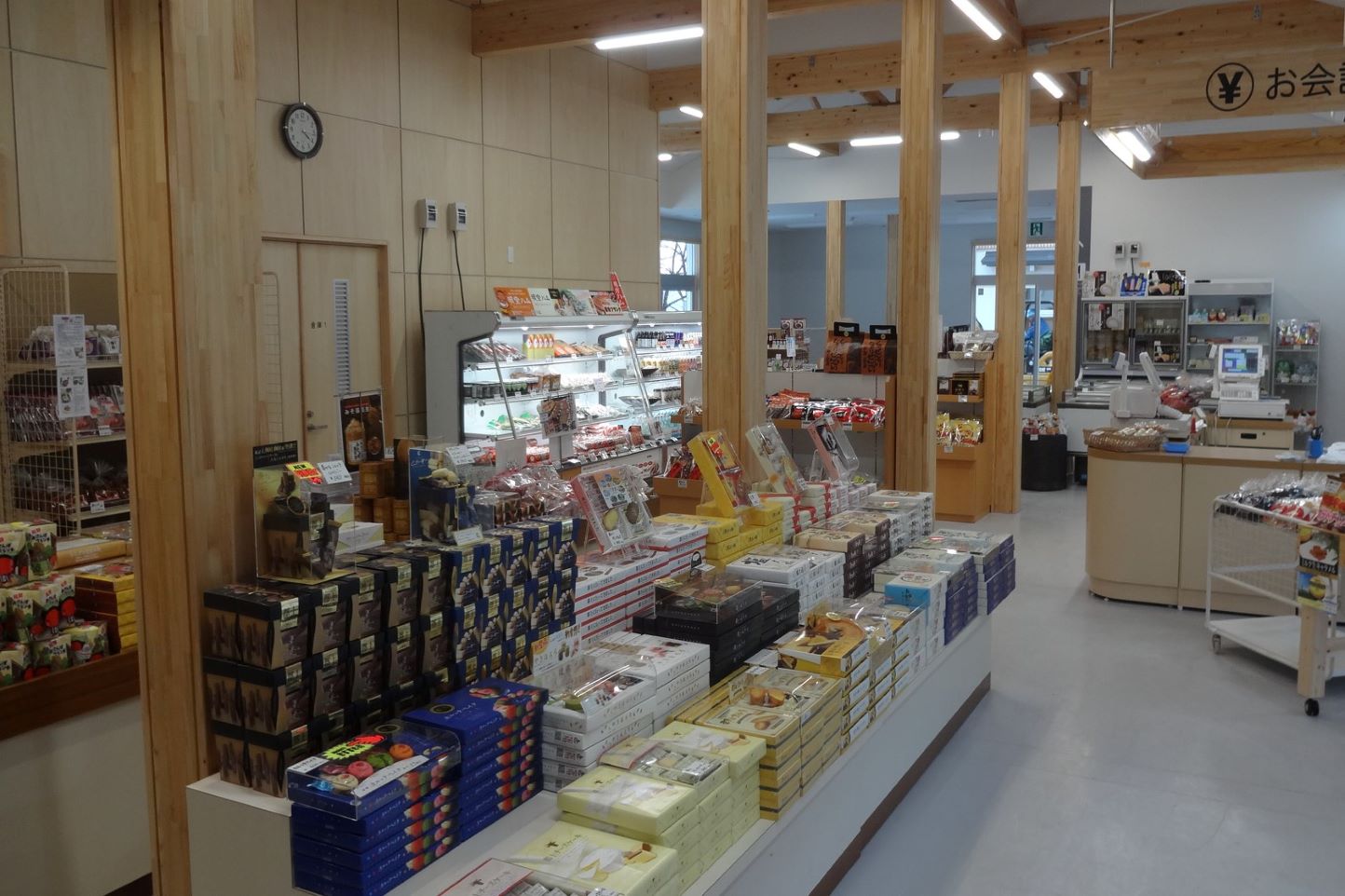
You can buy local specialty and souvenir at the shop.
Darumaya
If you want to try the taste of Gujo, you need to try the natural ayu at Darumaya!
Gujo Ayu (Sweetfish) is famous for its tight body and smell like watermelon. Ayu fishing starts from June. Darumaya provides salt grilled Ayu, boiled Ayu and bamboo grass grilled Ayu and other Ayu cuisine. They also have Hida beef, boar meat, deer meat and other seasonal cuisine. Darumaya is also a vender of ayu fish. They also send fresh ayu to other prefectures of Japan.
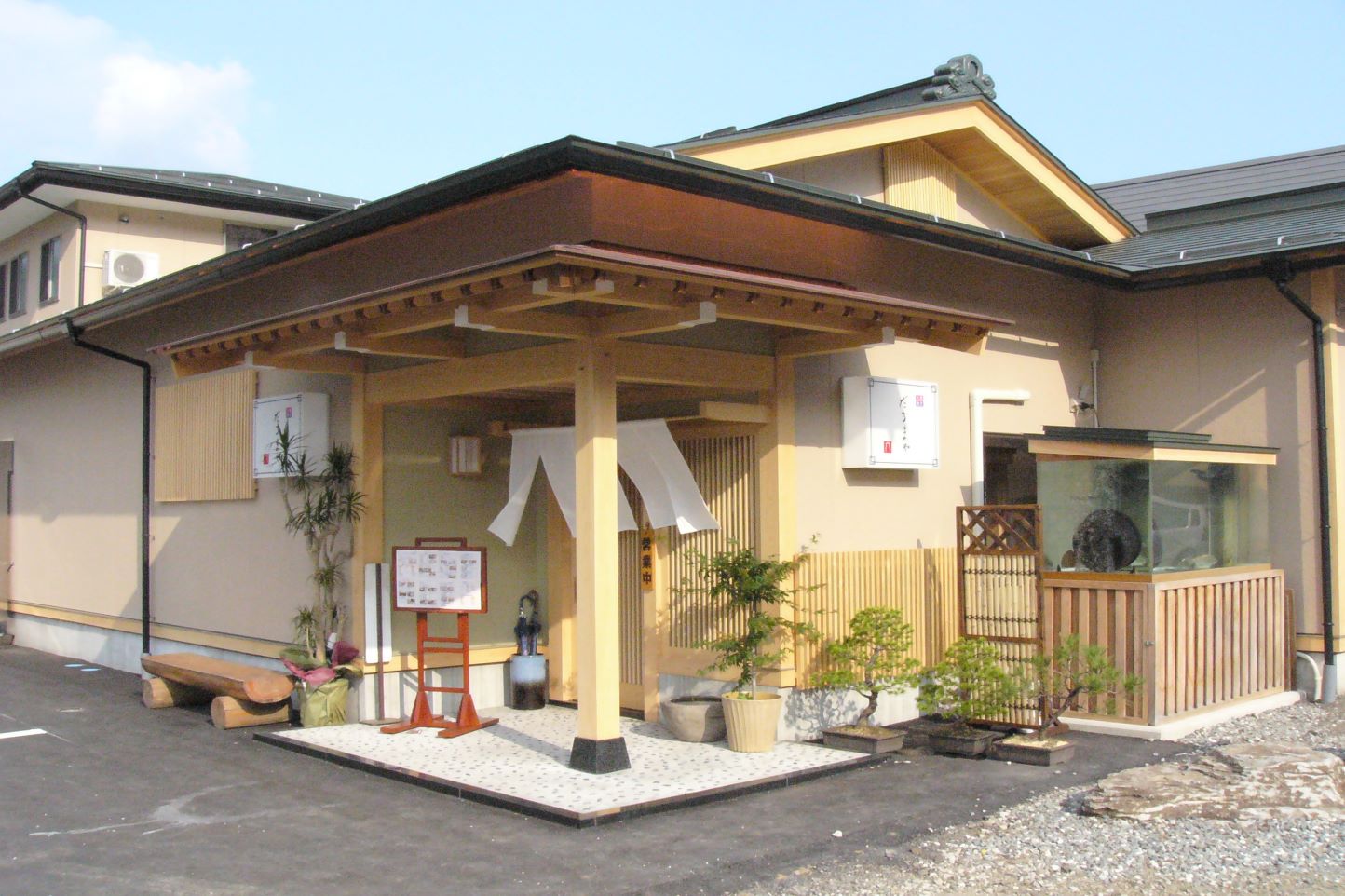
Darumaya is established in 1928 as an Ayu vender.
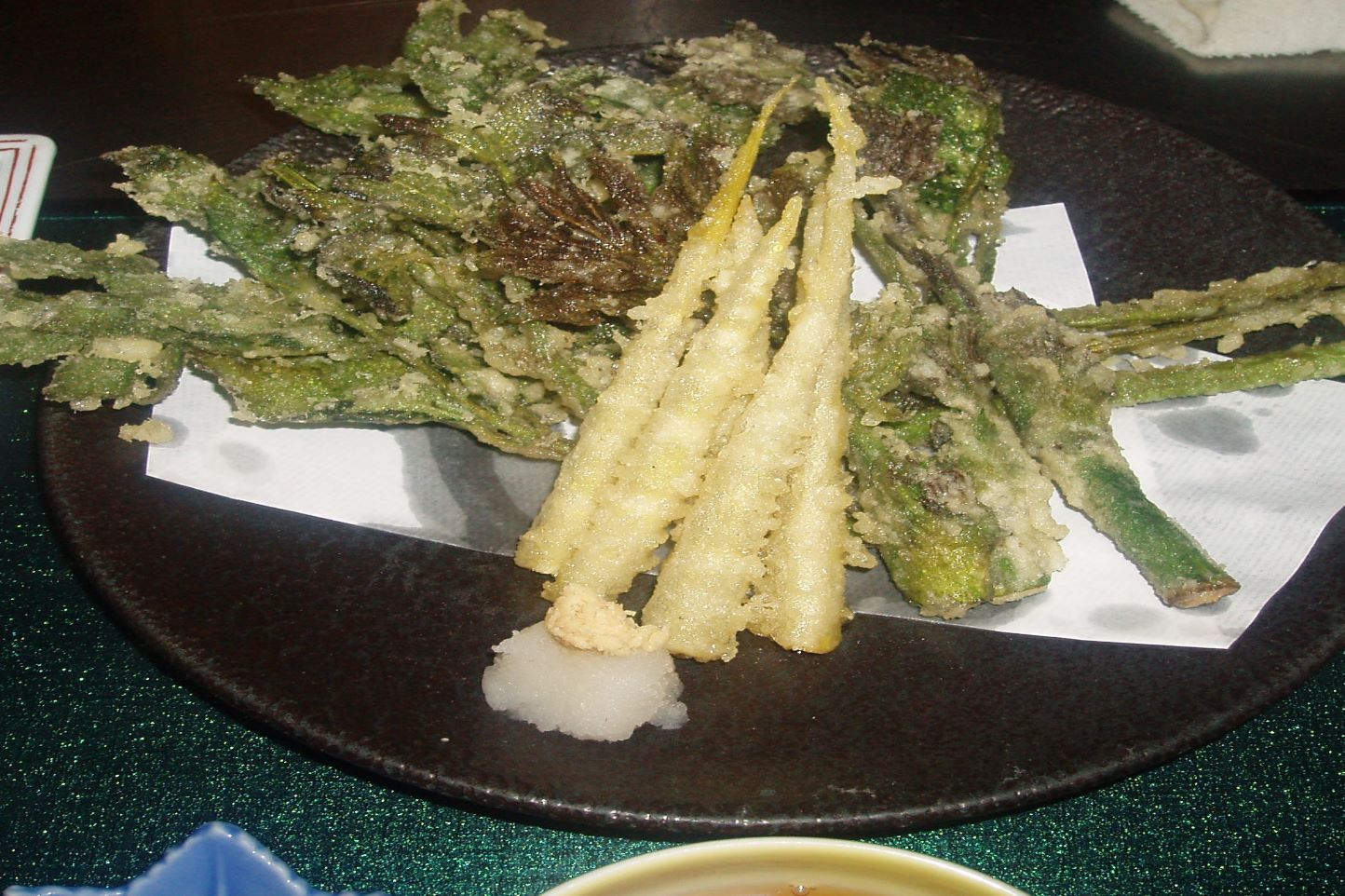
Wild vegetable and river fish set are also available.

The smell of bamboo grass and Ayu matches so well. You can only taste it here at Gujo!
Kamiho-no-yu
Heal your body and soul by the hot spring at Kamiho-no-yu!
Kamiho-no-yu reopened in March 2021. It has a large communal bath, open-aired bath using natural stone. The water of this hot spring is good for your skin. You absolutely need to try it!
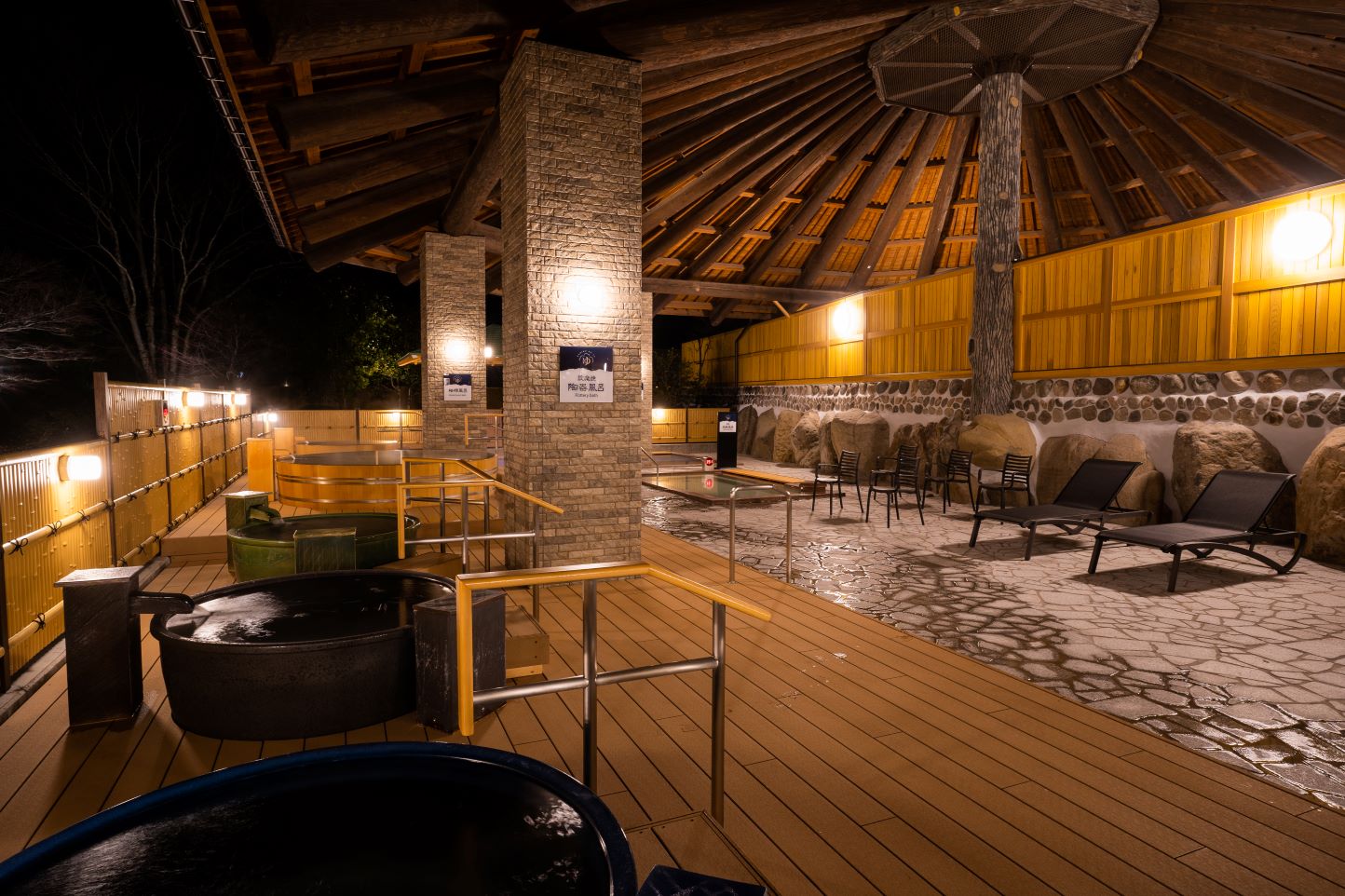
This large communal bath, hinoki wooden bath and pottery bath are very popular!
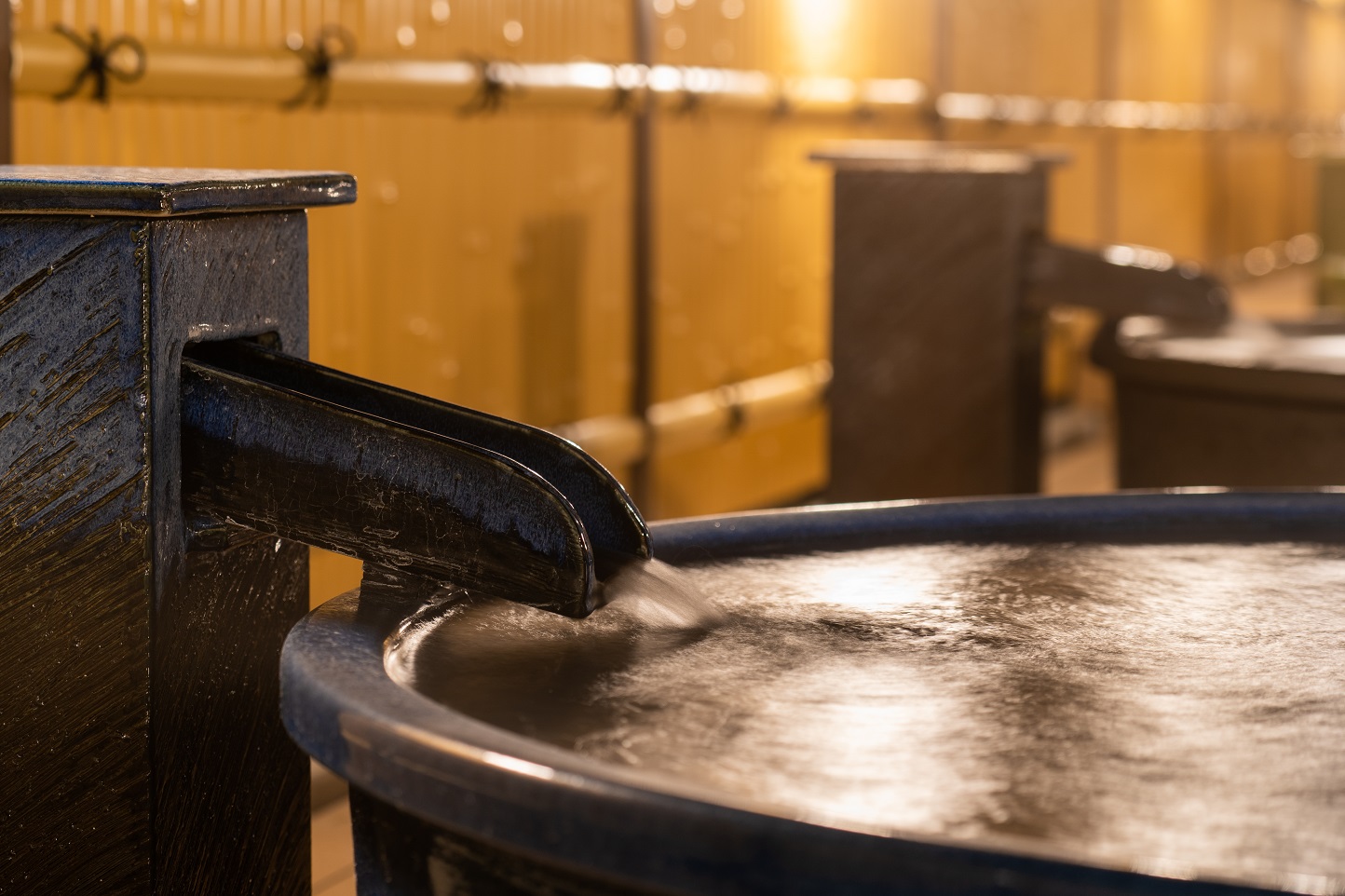
Smooth water is good for your skin.
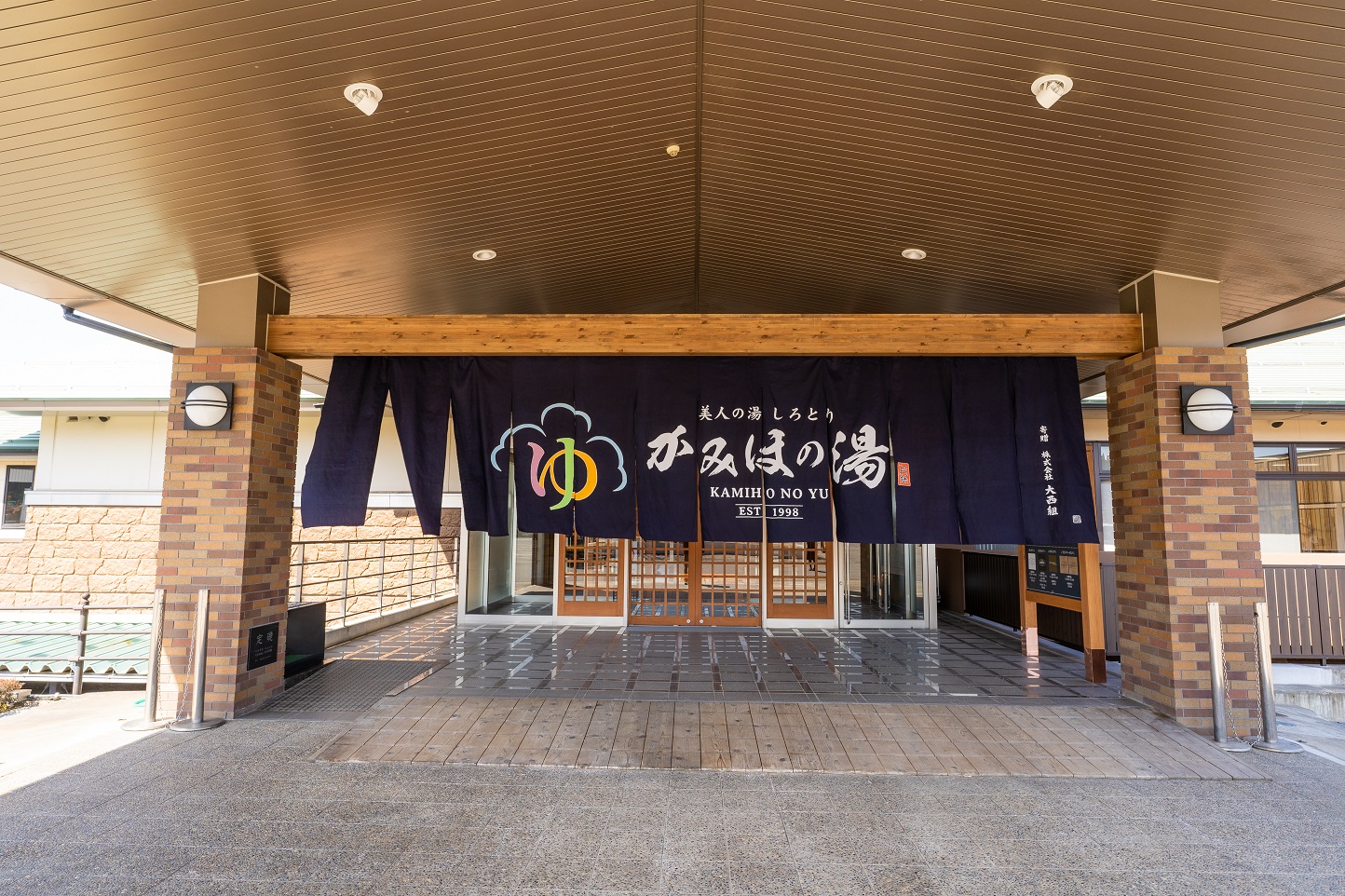
This hot spring reopened in March 2021. It becomes brighter and more spacious.


